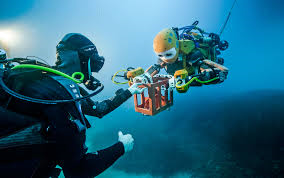
Breaking News
 $26M Frozen on Blockchain - With One Click
$26M Frozen on Blockchain - With One Click
 Italy are on national strike shutdown rejecting digital enslavement...
Italy are on national strike shutdown rejecting digital enslavement...
 The following U.S. states are currently using the rebranded "Reporty Homeland Security" so
The following U.S. states are currently using the rebranded "Reporty Homeland Security" so
 NATO Chief Urges Europe To Prepare For Long-Term World War With Russia, China, Iran & North Korea
NATO Chief Urges Europe To Prepare For Long-Term World War With Russia, China, Iran & North Korea
Top Tech News
 HUGE 32kWh LiFePO4 DIY Battery w/ 628Ah Cells! 90 Minute Build
HUGE 32kWh LiFePO4 DIY Battery w/ 628Ah Cells! 90 Minute Build
 What Has Bitcoin Become 17 Years After Satoshi Nakamoto Published The Whitepaper?
What Has Bitcoin Become 17 Years After Satoshi Nakamoto Published The Whitepaper?
 Japan just injected artificial blood into a human. No blood type needed. No refrigeration.
Japan just injected artificial blood into a human. No blood type needed. No refrigeration.
 The 6 Best LLM Tools To Run Models Locally
The 6 Best LLM Tools To Run Models Locally
 Testing My First Sodium-Ion Solar Battery
Testing My First Sodium-Ion Solar Battery
 A man once paralyzed from the waist down now stands on his own, not with machines or wires,...
A man once paralyzed from the waist down now stands on his own, not with machines or wires,...
 Review: Thumb-sized thermal camera turns your phone into a smart tool
Review: Thumb-sized thermal camera turns your phone into a smart tool
 Army To Bring Nuclear Microreactors To Its Bases By 2028
Army To Bring Nuclear Microreactors To Its Bases By 2028
 Nissan Says It's On Track For Solid-State Batteries That Double EV Range By 2028
Nissan Says It's On Track For Solid-State Batteries That Double EV Range By 2028
"Robo-mermaid" combs ocean depths for shipwreck treasure

But via haptic feedback technology and artificial intelligence, Stanford University's humanoid diving robot is now putting the ocean's depths within human reach. In its maiden expedition, the OceanOne droid has just scoured an untouched shipwreck off the coast of France and returned with a delicate, 17th century vase in its grip. Researchers are now eyeing future voyages to coral reefs, oil rigs and underwater disaster zones.
With our deep sea diving capabilities only taking us so far, we have long sought to send robots down below to do the investigating for us. We have seen swimming robots inspired by jellyfish, eels, octopi and rays, but in the view of the Stanford researchers the human form could have plenty to offer these aquatic endeavors as well.
OceanOne was originally dreamt up as a tool to study coral reefs deep in the Red Sea with a delicacy of touch resembling that of a human.

 Carbon based computers that run on iron
Carbon based computers that run on iron

